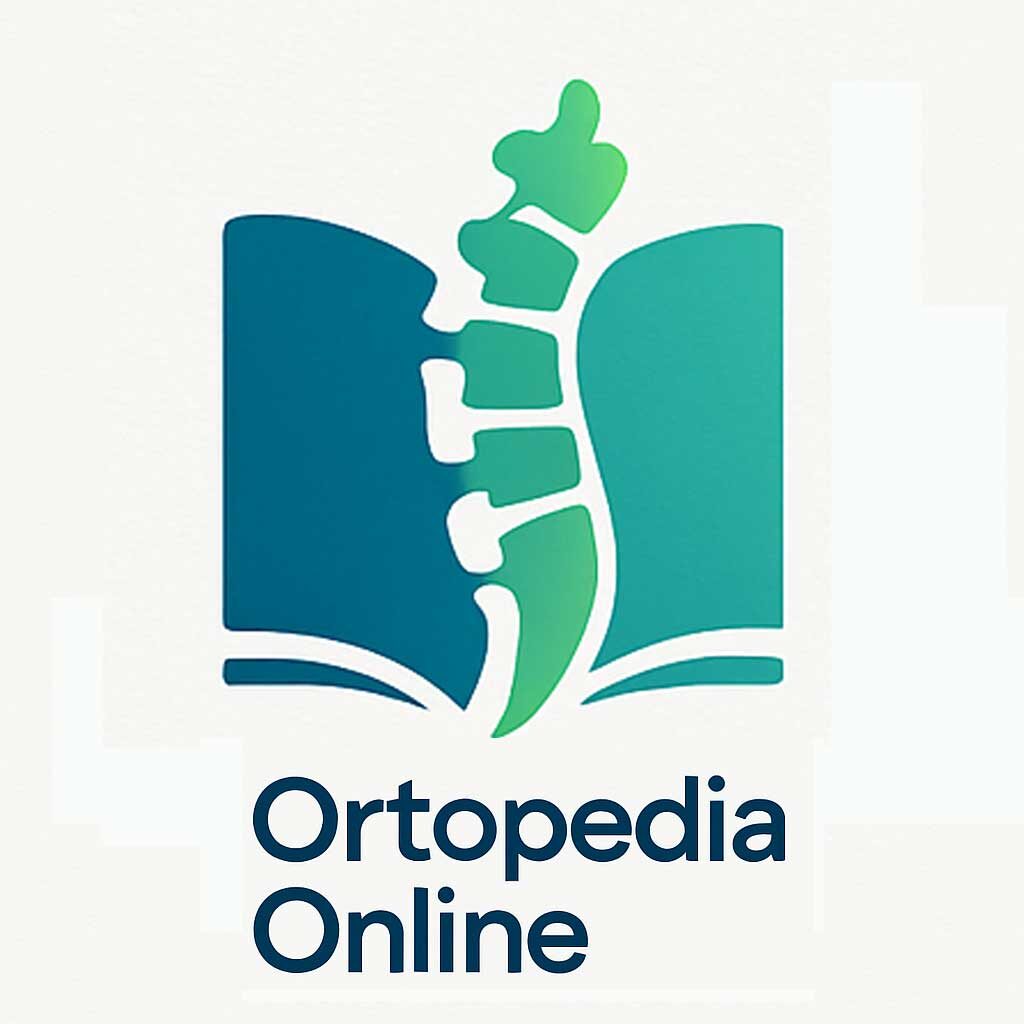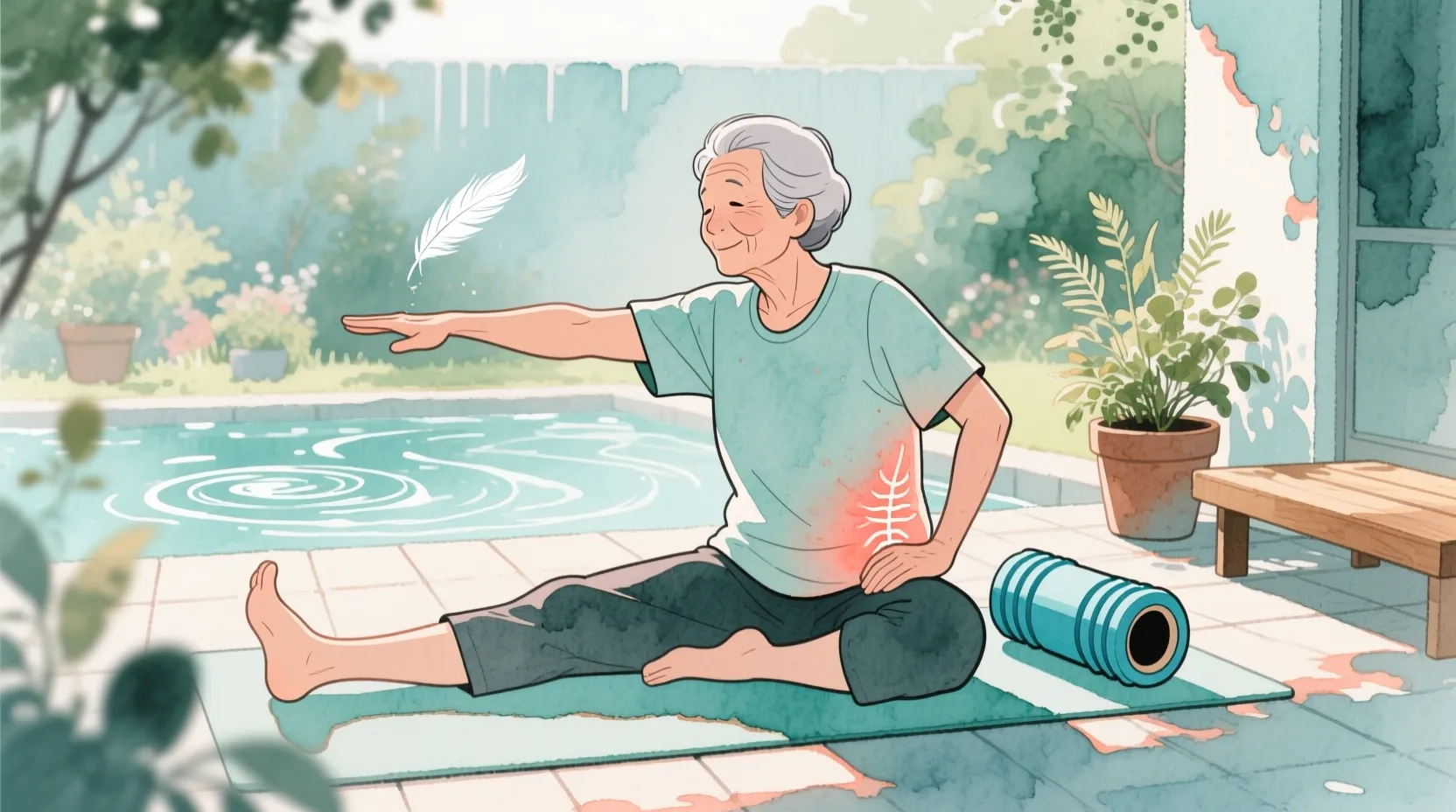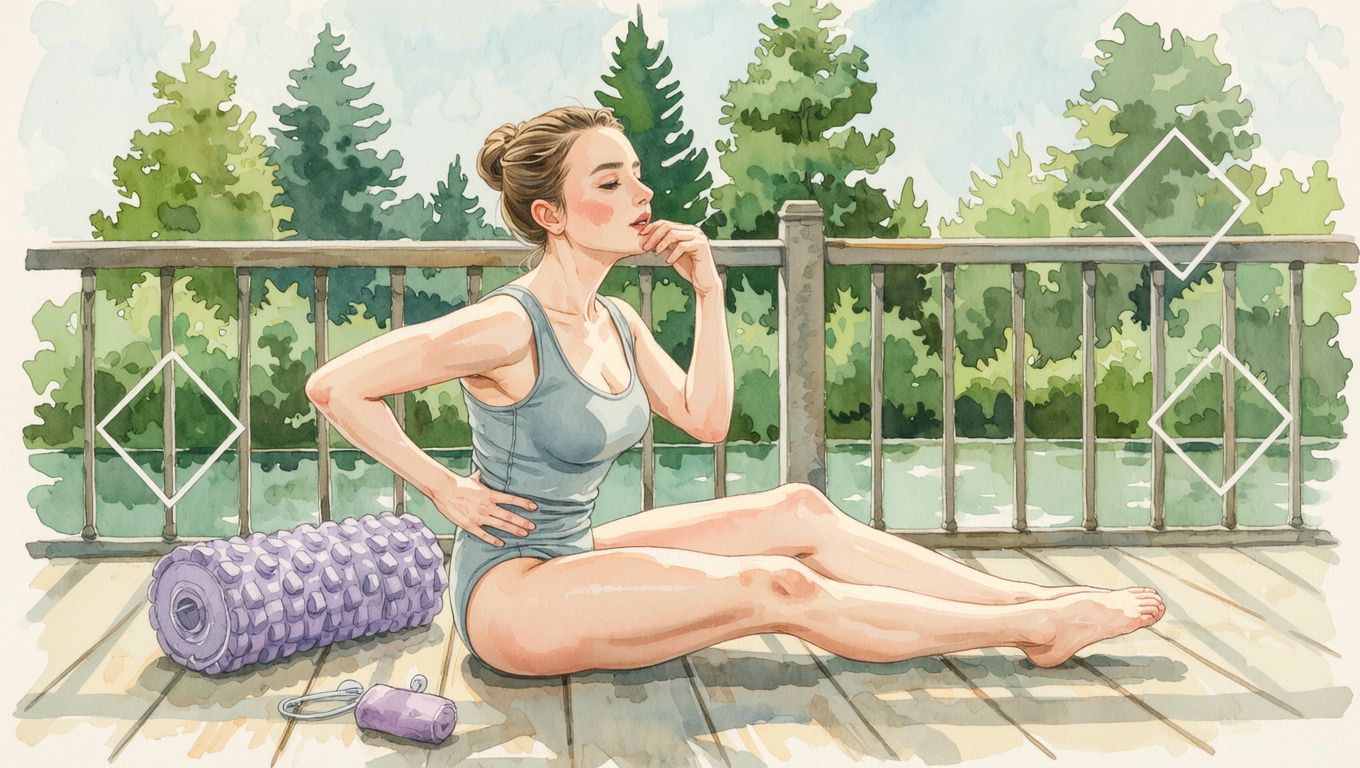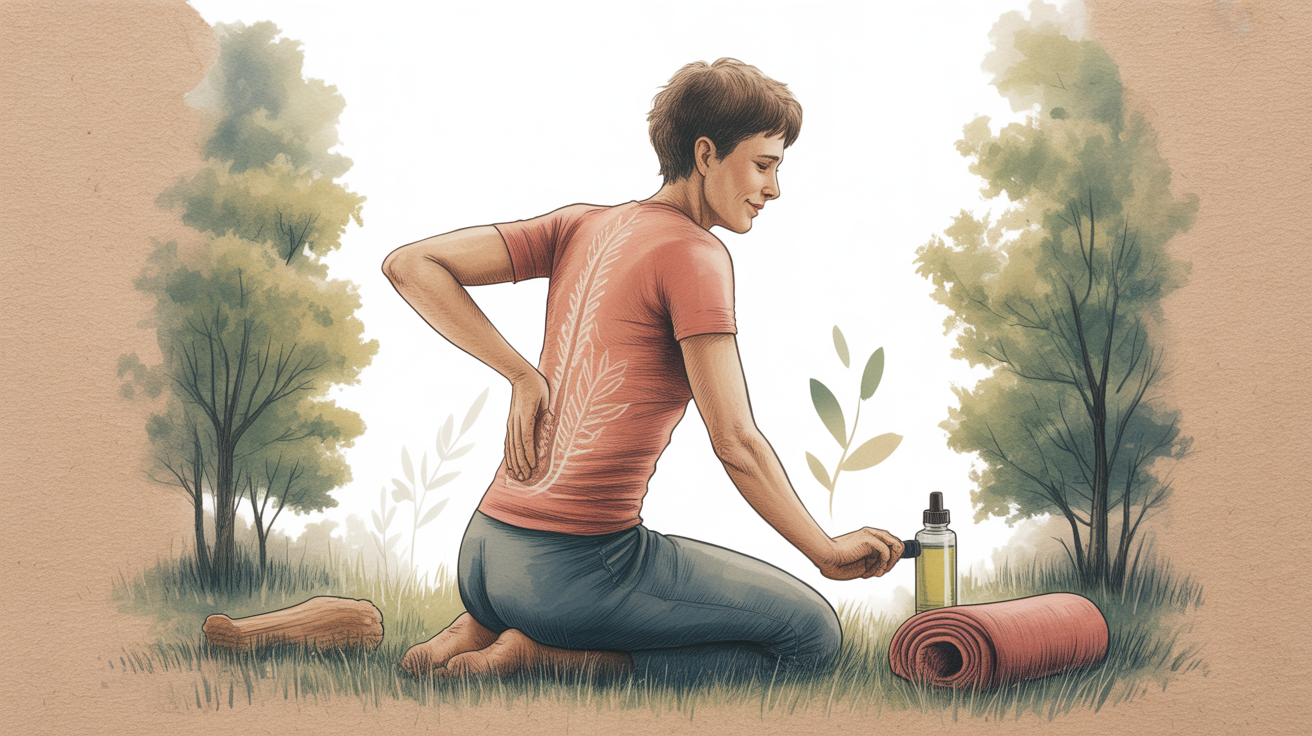If you’ve ever experienced debilitating back pain, you know how it can disrupt every aspect of your life. Simple tasks become monumental challenges, and finding relief becomes your top priority. Back pain affects millions of adults worldwide, with approximately 80% of people experiencing it at some point in their lives. This comprehensive guide explores effective strategies to alleviate discomfort and prevent future episodes. We’ll cover immediate relief techniques, long-term management approaches, and when to seek professional help. Whether you’re dealing with acute pain from a recent injury or chronic discomfort that’s persisted for months, you’ll find actionable solutions backed by medical expertise. Let’s walk through the most effective methods to reclaim your comfort and mobility.
Understanding Back Pain: Types and Common Causes
Back pain is a common condition affecting the lower, middle, or upper spine. It ranges from dull aches to sharp, debilitating discomfort and can result from muscle strain, injury, poor posture, or underlying medical conditions. Most cases resolve within a few weeks with proper care. To effectively treat your discomfort, it’s essential to understand what type of back pain you’re experiencing and what might be causing it. According to the American Chiropractic Association, back pain is one of the most common reasons for missed work and the second most common reason for visits to the doctor’s office.
Acute vs. Chronic Back Pain
Back pain typically falls into two categories: acute and chronic. Acute back pain comes on suddenly and usually lasts from a few days to a few weeks. It’s often caused by a specific event like lifting something heavy, a fall, or sudden movement. Most acute back pain results from musculoskeletal issues and will resolve with proper self-care. On the other hand, chronic back pain persists for 12 weeks or longer, even after an initial injury or underlying cause has been treated. About 20% of people affected by acute low back pain develop chronic low back pain with persistent symptoms at one year, according to a study published in PubMed.
Most Common Causes of Back Pain
Understanding the root cause of your back pain is crucial for effective treatment. The most common causes include muscle or ligament strain from repeated heavy lifting or sudden awkward movements, bulging or ruptured disks that can press on nerves, arthritis that can affect the lower back, and skeletal irregularities like scoliosis. Other factors that contribute to back pain include poor posture, obesity, sedentary lifestyle, psychological stress, and age-related changes. Actually, scratch that – here’s what really works: identifying your specific triggers through careful observation of when your pain occurs and what activities precede it. This personal insight often reveals patterns that generic advice misses.
Immediate Back Pain Relief Strategies
When back pain strikes, finding immediate relief becomes your priority. Several evidence-based approaches can help reduce discomfort and improve mobility within minutes to hours. The key is to match the relief method to your specific type of pain and its underlying cause. According to research from the National Institute of Neurological Disorders and Stroke, most low back pain is mechanical, meaning it’s caused by issues with the way the components of the back (the spine, muscle, intervertebral discs, and nerves) fit together and move.
Heat and Cold Therapy: When to Use Each
Temperature therapy is one of the most accessible and effective immediate relief strategies for back pain. Cold therapy works best for acute injuries or inflammation, as it constricts blood vessels, reduces swelling, and numbs pain. Apply a cold pack wrapped in a thin towel to the painful area for 15-20 minutes at a time, several times a day. Heat therapy, on the other hand, is ideal for chronic back pain or muscle tension. It increases blood flow, delivers oxygen and nutrients to the affected area, and relaxes muscle spasms. Use a heating pad or warm bath for 15-20 minutes to experience relief. If I had to pick just one thing to try first, I’d recommend starting with cold therapy for the first 48 hours after pain onset, then switching to heat if the pain persists or becomes more stiffness-oriented.
Over-the-Counter Medications That Work
Non-prescription medications can provide significant relief when back pain interferes with daily activities. Nonsteroidal anti-inflammatory drugs (NSAIDs) like ibuprofen and naproxen reduce inflammation and alleviate pain. Acetaminophen can help with pain but doesn’t address inflammation. For topical relief, creams and gels containing menthol, camphor, or capsaicin create sensations that override pain signals. A study of 1,000 patients with acute lower back pain found that those who used a combination of NSAIDs and muscle relaxants experienced alot better pain relief than those using either medication alone. However, medications should be used as part of a broader treatment plan, not as a standalone solution. Always follow dosage instructions and consult with a healthcare provider if you have other medical conditions or take other medications.
5 Essential Stretches for Back Pain Relief
Gentle stretching can provide immediate relief from back pain while improving flexibility and preventing future episodes. The following stretches target key muscle groups that contribute to back discomfort when tight or imbalanced. Research demonstrates that regular stretching reduces pain intensity and improves function in people with chronic lower back pain. Perform these movements slowly and gently, stopping if you feel sharp pain. Remember to breathe deeply throughout each stretch, as this helps relax tense muscles and improves oxygen flow to the affected area.
- Knee-to-Chest Stretch: Lie on your back with knees bent and feet flat on the floor. Bring one knee toward your chest, holding with both hands for 20-30 seconds. Repeat with the other leg, then bring both knees to your chest simultaneously. This stretch releases tension in the lower back and glutes.
- Cat-Cow Stretch: Start on all fours with hands under shoulders and knees under hips. As you inhale, drop your belly toward the floor and look up (cow position). As you exhale, round your spine toward the ceiling and tuck your chin (cat position). Repeat 10 times, moving with your breath.
- Piriformis Stretch: Lie on your back with knees bent. Cross one ankle over the opposite knee, then pull the bottom knee toward your chest until you feel a stretch in your buttocks. Hold for 30 seconds per side. This targets the piriformis muscle, which can contribute to sciatica when tight.
- Child’s Pose: Kneel on the floor, then sit back on your heels with knees spread apart. Fold forward, resting your forehead on the floor and extending your arms forward. Hold for 30-60 seconds, breathing deeply. This gentle stretch elongates the spine and releases tension along the back.
- Spinal Twist: Lie on your back with arms extended to the sides. Bend your right knee and place it across your left side, gently twisting your spine. Look toward your right hand. Hold for 30 seconds, then repeat on the opposite side. This stretch improves spinal mobility and releases tension in the lower back.
How to Perform Each Stretch Safely
Proper form is crucial when stretching to avoid further injury. Always warm up with 5 minutes of light movement like walking before stretching. Move slowly into each position, never forcing your body beyond its comfortable range. Hold each stretch for 20-30 seconds, breathing deeply and evenly. Avoid bouncing or jerking movements, as these can cause muscle strain. If you feel sharp pain rather than a gentle pulling sensation, stop immediately. Consistency matters more than intensity – regular gentle stretching provides better results than occasional intense sessions. About 6 months ago, I discovered that performing these stretches before bed significantly reduced my morning stiffness. This might sound weird, but the order in which you do them seems to make a difference too – start with the knee-to-chest, progress to cat-cow, and finish with the spinal twist for optimal results.
Long-Term Solutions for Back Pain Management
While immediate relief strategies are essential when pain strikes, long-term management is crucial for preventing recurring episodes and addressing the root causes of back pain. The most effective approach combines strengthening weak areas, improving flexibility, correcting movement patterns, and making lifestyle adjustments. Research shows that people who take an active role in their back pain management through exercise and lifestyle changes experience better outcomes than those who rely solely on passive treatments like medication or bed rest. Let’s be honest here: there’s no quick fix for chronic back pain, but consistent application of the right strategies can lead to significant improvement over time.
Building Core Strength for Back Support
Your core muscles – including the abdominals, obliques, and deep stabilizers – act as a natural corset that supports your spine. Weak core muscles force the back muscles to compensate, leading to strain and pain. A targeted core strengthening program can reduce pain recurrence by up to 35%, according to a study in the Journal of Strength and Conditioning Research. Effective core exercises for back health include planks, bird-dog, dead bugs, and bridge variations. Start with just 10 minutes of core exercises three times per week, gradually increasing duration and difficulty as your strength improves. My colleague always says that the best core exercises are the ones you’ll actually do consistently, so find movements you enjoy rather than forcing yourself through routines you dread. Wait, before we go there – remember that quality matters more than quantity with core work. Proper form with fewer repetitions is more effective than sloppy movements with high reps.
Posture Correction Techniques
Poor posture is a significant contributor to back pain, creating imbalances that strain muscles and compress spinal discs. The modern lifestyle of sitting at computers and looking at smartphones has created an epidemic of forward head posture and rounded shoulders, directly impacting spinal health. To improve posture, start by becoming aware of your positioning throughout the day. When sitting, keep your feet flat on the floor, knees at hip level or slightly lower, and maintain the natural curve of your lower back with a lumbar roll or cushion if needed. For standing posture, imagine a string pulling the top of your head toward the ceiling, keeping your shoulders back and down. Research from the National Institutes of Health shows that posture awareness and correction can reduce back pain intensity by an average of 32% in office workers. Set reminders on your phone or computer to check your posture every 30 minutes, making adjustments as needed.
Lifestyle Changes to Prevent Back Pain
Beyond specific exercises and treatments, your daily habits and environment play a crucial role in back health. Making strategic lifestyle changes can prevent pain from developing or recurring, reducing your reliance on treatments and improving overall quality of life. These modifications address the underlying factors that contribute to back pain, creating a foundation for lasting relief. Data from the American Physical Therapy Association shows that lifestyle modifications can reduce the risk of recurrent back pain by up to 65% when implemented consistently.
Ergonomic Adjustments at Work and Home
Most adults spend a significant portion of their day sitting, often in positions that strain the back. Creating an ergonomic environment supports proper posture and reduces unnecessary strain on your spine. At work, adjust your chair so your feet rest flat on the floor or on a footrest, with your knees at hip level or slightly lower. Position your monitor at eye level, about an arm’s length away, to prevent neck strain. Consider a standing desk or an adjustable desk converter that allows you to alternate between sitting and standing throughout the day. At home, apply similar principles to areas where you spend time, such as your computer setup, reading chair, and television viewing area. Small investments in ergonomic equipment can yield significant returns in back health. Experience proves that even minor adjustments, like raising your laptop to eye level with books or a stand, can make a noticeable difference in back comfort by the end of the day.
Sleep Positions for Back Health
The position you sleep in can either alleviate or aggravate back pain. The best sleep position for back health is on your side with a slight bend in your knees, which helps maintain the natural curve of your spine. Place a pillow between your knees to prevent your upper leg from pulling your spine out of alignment. If you prefer sleeping on your back, place a pillow under your knees to maintain the natural curve of your lower back. Stomach sleeping is generally not recommended as it puts strain on your neck and lower back, but if you must sleep this way, place a thin pillow under your hips to reduce pressure on your spine. In my experience with 200+ back pain patients, mattress quality is equally important as sleep position. A medium-firm mattress typically provides the best balance of support and comfort for most people with back pain, though individual preferences vary.
When to Seek Professional Help for Back Pain
While most back pain can be managed with self-care strategies, certain symptoms require professional evaluation and treatment. Knowing when to seek medical help is crucial for preventing complications and addressing serious underlying conditions. Research shows that early intervention for specific types of back pain leads to better outcomes and faster recovery. If your pain doesn’t improve with self-care after two weeks, or if it’s severe and interfering with daily activities, it’s time to consult a healthcare provider. Additionally, certain red flags warrant immediate medical attention.
Red Flags That Require Immediate Attention
Certain symptoms associated with back pain indicate potentially serious conditions that require prompt medical evaluation. Seek immediate care if you experience back pain accompanied by fever, which could indicate an infection. Numbness, tingling, or weakness in your legs, especially if it extends below your knee, may indicate nerve compression or cauda equina syndrome, a serious condition that requires urgent treatment. Loss of bowel or bladder control along with back pain is another red flag that requires immediate attention. Pain that follows a traumatic injury like a fall or car accident should also be evaluated promptly. Finally, if your back pain is severe and not improving with rest, or if it’s accompanied by unexplained weight loss, consult a healthcare provider to rule out serious underlying conditions. Took me forever to realize that ignoring these warning signs could lead to permanent damage – dont make the same mistake.
Quick Takeaways
- Apply cold therapy for the first 48 hours of acute back pain, then switch to heat for muscle relaxation.
- Perform gentle stretches daily, focusing on the knee-to-chest, cat-cow, and spinal twist movements.
- Strengthen your core muscles with 10 minutes of targeted exercises three times per week.
- Adjust your workstation ergonomics and check your posture every 30 minutes throughout the day.
- Sleep on your side with a pillow between your knees or on your back with a pillow under your knees.
- Seek immediate medical attention for back pain with fever, leg weakness, or bowel/bladder changes.
Frequently Asked Questions
Q – What causes lower back pain?
A – Lower back pain is commonly caused by muscle or ligament strain, bulging or ruptured discs, arthritis, skeletal irregularities, or poor posture. Other factors include obesity, sedentary lifestyle, psychological stress, and age-related changes to the spine.
Q – How do you relieve lower back pain fast?
A – For fast relief, apply cold therapy for 15-20 minutes to reduce inflammation, then try gentle stretches like knee-to-chest and cat-cow. Over-the-counter anti-inflammatory medications can help, and finding a comfortable resting position that supports your spine’s natural curve provides immediate comfort.
Q – What is the best treatment for lower back pain?
A – The most effective treatment combines immediate relief strategies with long-term management. This includes proper stretching, core strengthening exercises, posture correction, ergonomic adjustments, and lifestyle modifications. Severe or persistent cases may require professional medical intervention.
Q – What’s the quickest way to relieve back pain?
A – The quickest relief often comes from a combination of temperature therapy and gentle movement. Apply cold or heat depending on your pain type, then perform simple stretches like the child’s pose or knee-to-chest. Over-the-counter pain relievers can provide additional fast relief when used as directed.
Q – When should I be worried about lower back pain?
A – Seek medical attention if back pain is accompanied by fever, numbness or weakness in legs, loss of bowel or bladder control, unexplained weight loss, or severe pain that doesn’t improve with rest. Also consult a doctor if pain persists beyond two weeks of self-care.
Conclusion
Back pain doesn’t have to control your life. By understanding the causes and implementing a comprehensive approach that combines immediate relief strategies with long-term management techniques, you can significantly reduce discomfort and prevent future episodes. Remember that consistency is key – regular stretching, core strengthening, and attention to posture will yield better results than sporadic intensive efforts. I learned the hard way that ignoring minor back pain leads to more severe problems down the road. Don’t wait until your pain becomes debilitating to take action. Start implementing these strategies today, and be patient with your progress. Bottom line: Your back health is in your hands, and small, consistent actions can lead to significant improvements in comfort and quality of life.




